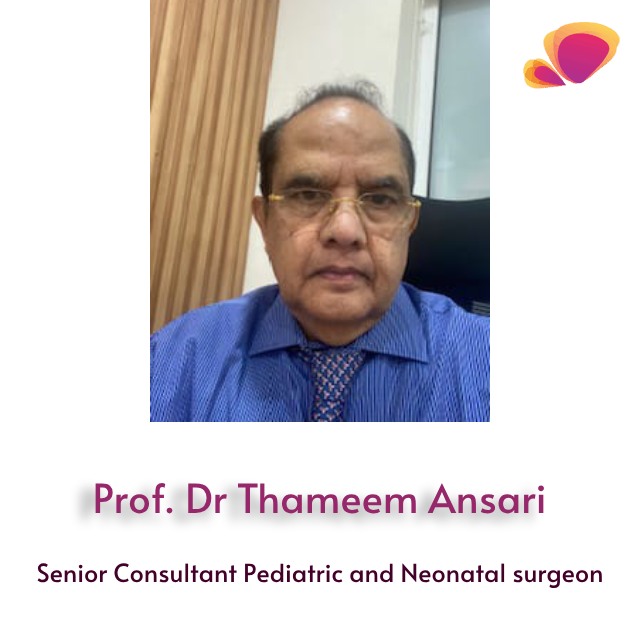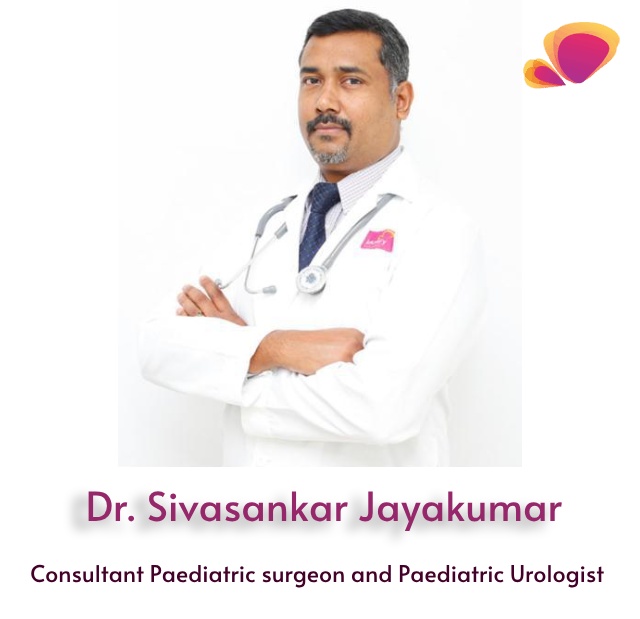Message from Team IMA Chennai Kauvery Alwarpet Branch

Dear colleagues,
Welcome to IMA July edition.
Doctor’s day Greetings from Chennai Kauvery Alwarpet branch.
We take this opportunity to wish and thank our Dear Doctors for their selfless service.
This month’s platter of articles is from our Department of Paediatrics a multidisciplinary field with paediatrians, neonatologists, paediatric Oncologist, paediatric surgeons and PICU paediatric intensivist from our hospital giving a wholesome paediatric approach. We thank them for their contributions.
Long Live IMA.
Yours in IMA service,
Dr S Sivaram Kannan
President

This monthly IMA journal focus on issues related to paediatric health.
Little steps in knowledge acquisition.
Long live IMA.
Yours in IMA service,
Dr. Bhuvaneshwari Rajendran
Secretary.

Dear friends
I am happy to share this month IMA journal with all of you
The contribution is from the department of Pediatrics. I am thankful to all the contributing authors.
Thanks to the editorial and branding team for their support.
With regards
Dr. R. Balasubramaniyam
Editor

Vitamin E Deficiency - A Forgotten Entity!
ABSTRACT:
Vitamin E comprises a group of eight biologically active tocopherols, among which d-alpha-tocopherol has the highest antioxidant activity. It prevents the cell membranes from lipid peroxidation and is involved in eicosanoid synthesis. Preterm, especially VLBW infants are at a higher risk of developing Vitamin E deficiency because of poor intake, poor absorption, low storage and higher requirement compared to the term infants. Serum levels of vitamin E are lowest at 4 weeks of age, when a physiological drop in hemoglobin also occurs. These two factors lead to missing the diagnosis of vitamin E deficiency in many infants. We report a VLBW preterm infant who presented to us with hemolytic anemia and improved with oral administration of vitamin E.

An Infant with Unilateral Retinoblastoma
CASE DETAILS
A 15months old female child was brought with c/o whitish pupillary reflex in the left eye (RE), for the past 2 months. No redness, swelling or pain was noted. The mother had noticed the white reflex for the past 2 months, but has disregarded as vitamin deficiency. The child was 1st born to non consanguineous parents, through normal vaginal delivery and the antenatal period was uneventful. She was developmentally normal for age. No significant family history was noted.
The child was taken to an ophthalmologist and Indirect ophthalmoscopy showed a whitish mass in left eye and right eye was normal. USG B scan showed a dome-shaped echogenic mass arising from the retina extending into the vitreous cavity. Hence she was referred here for further evaluation.

West Syndrome - One syndrome, Many Manifestations
Case Scenario
A 2-year-old boy, a known case of Global developmental delay/HIE sequelae/Symptomatic West syndrome presented to the emergency room with status epilepticus (semiology – GTCS) after being spasms-free for a year. In the past, he had received hormonal therapy (6 weeks of oral prednisolone regimen) in infancy and was on multiple AEDs for seizure control.
In the current admission, he also had clinical features suggestive of aspiration including tachypnea, hypoxemia, chest retractions and crackles on auscultation. Emergent measures for status epilepticus were instituted including prompt establishment of IV access followed by loading dose of levetiracetam, airway protective measures, clearance of nasal and oropharyngeal secretions and supplemental oxygen at 5 L/min.

Prolonged Jaundice in Children - Diagnosis and Management
Introduction:
Prolonged jaundice is defined as jaundice lasting for more than 14 days of life in full-term infants. Etiologically, it has to be distinguished between obstructive jaundice and jaundice due to medical causes. Serum bilirubin (SB) > 5mg/dl or 85 Mmol/L in term infants, 14 days after birth and 21 days after birth in preterm babies. Jaundice affects 2 to 15% of all new born (NB) babies and 40% of breast-fed babies (BF). Prolonged jaundice after 28 days of life must be viewed with suspicion of cholestatic jaundice (obstructive jaundice) until proved otherwise. I am presenting my personal experience in management of jaundice due to surgical causes – a. biliary atresia b. biliary hypoplasia c. inspissated bile plug syndrome d. idiopathic perforation of bile duct e. congenital choledochal cyst, primary sclerosing cholangitis, etc.

Congenital Hydrocephalus (Aqueductal Stenosis) in a Very Low Birth Weight Preterm baby with Failure to thrive
3 months old male, very low birth weight (1.4 Kg on presentation and 650 gms at birth) preterm baby (Gestation age on admission 37 weeks and at birth 25 weeks) was brought by parents with history of gradual increase in head size for last 3 weeks , difficulty in feeding, loss of weight and lethargy.
Birth history: Baby is a 2nd twin (1st twin died in NICU at 1 week age) delivered through preterm labour to a primi mother with no significant antenatal morbidity. Postnatal period, baby was on mechanical ventilator support (1 dose surfactant given) for 2 days followed by high flow oxygen support (8 weeks of NICU stay and discharged). No history or evidence suggestive of birth asphyxia, Intracranial haemorrhage, seizures, meningitis.

Vesico-ureteric Reflux [VUR] in Children
Vesico-ureteric reflux [VUR] is abnormal reverse flow of urine from the bladder back to the kidneys. VUR is the most common urological problem associated with urinary tract infection (UTI) in children. Most of the VUR are congenital (Primary) however they can occur following conditions causing bladder outlet obstruction (Secondary).
- How common is VUR?
It is seen in almost one third of children presenting with urinary infection (UTI) symptoms and also in 1- 2% in the general population. In infants the incidence is much higher among boys while in older children the incidence is reported to be higher among girls.

Quiz Of The Month
There is a well-defined heterodense lesion of size 9.5 x 11.8 cms seen in the left suprarenal location with loss of fat planes with the upper pole of the left kidney and pushing the stomach and tail of pancreas anteriorly. Left adrenal is not visualized separately.


